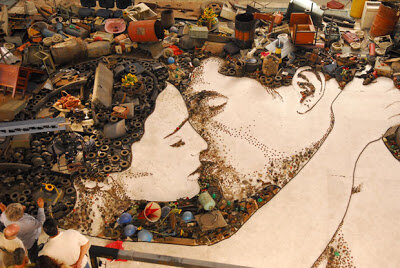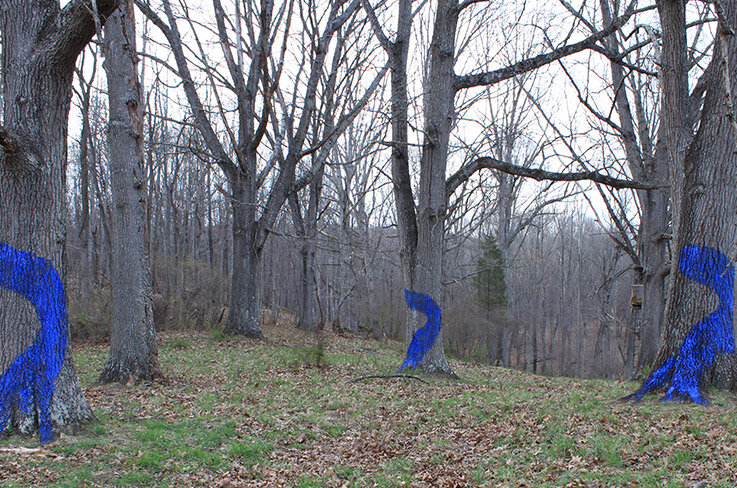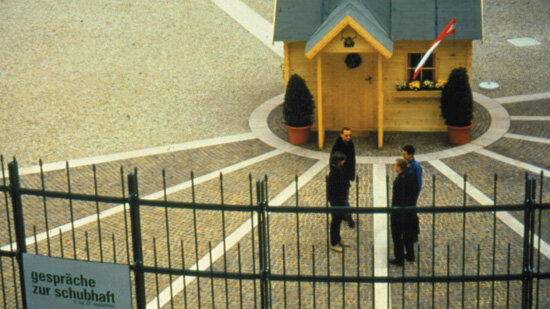A R T A N D E C O L O G Y
A R T
A N D
E C O L O G Y
BY BARBORA HORSKÁ
Since the beginning, as with other revolutionary movements, artists have been an integral part of addressing a variety of environmental issues. While graphic design provides visual identity for better communication and Land Art might help us to reconnect with nature itself, there is also performance art and participatory practices, all of which might be able to help us incorporate a more sustainable lifestyle and even offer solutions in cases where the justice system is failing.
Mentioning just a few selected artworks, without getting into the theory of environmental art at all, this short text offers just a starting point for you to get curious and dive deeper on your own into possibilities of creating positive changes in the world by using art as your main tool.
..when you can’t see the forest for the trees trash.
Despite the fortunate increase of popularity in minimalism and zero-waste lifestyle, one of the biggest challenges still concerns the amount of waste we keep producing everyday.
On the other hand, this field has become the perfect place to apply artistic creativity on how to deal with what’s already been thrown away, as much as come up with solutions to help people behave more responsibly despite our predisposed resistance to change.
..one man’s trash is another man’s art.
Photographer Vik Muniz travels to Brazil in Lucy Walker’s movie Waste Land to create monumental portraits of catadores, people collecting recyclable material at the landfill. With the initial idea of just selling photos and returning money to the community, Muniz gets into a moral struggle as he discovers background stories of the participants and limits of the art’s ability to help.
—> http://www.wastelandmovie.com
..what goes around comes around.
Incorporating philosophy of circular economy, Basurama Collective, an art group founded in Madrid, Spain in 2001 creates site-specific projects regarding waste and its reuse in the form that suits each project the best. Their approach goes from creating The Whirlpool of Waste, an object to collect trash at the music festival Roskilde in 2013 for maintaining cleanliness of the area while highlighting its quantity by storing it in one place, to other projects like how to build playgrounds from found waste material, with residents of the area participating in the whole process, always inspiring and teaching new skills at the same time.
—> https://basurama.org/en/all-projects/
WochenKlausur
An Austrian art collective whose members are often taking place as social workers, asked cultural institutions to donate unused material in their contribution for Beyond Green: Towards a Sustainable Art exhibition. In collaboration with design students, they created furniture based on the needs of underprivileged residents of the city. This initiative continued for five years as a part of a local NGO.
—> http://www.wochenklausur.at
..just plant more trees!
To balance this waste oriented practice, let’s mention Agnes Denes, the pioneer of environmental art, who created a forest in Finland by planting 11000 trees with 11000 people resulting in Tree Mountain - A Living Time Capsule that became the most famous one from her three forest projects, others in New York and Melbourne, Australia where it survived the several years of drought and is visible on Google Earth.
—> http://www.agnesdenesstudio.com/works4.html
Unlike Denes’s projects that are now highly valued, supported or even directly asked for by government (Finland), Blued Trees Symphony by environmental artist and activist Aviva Rahmani tested the legal power of art to stop pipeline construction by declaring the trees in the area as her artwork by painting them with blue colors, calling for protection based on Visual Artists Rights Act.
—> https://www.abladeofgrass.org/events/mock-trial/




